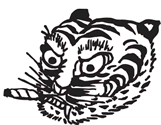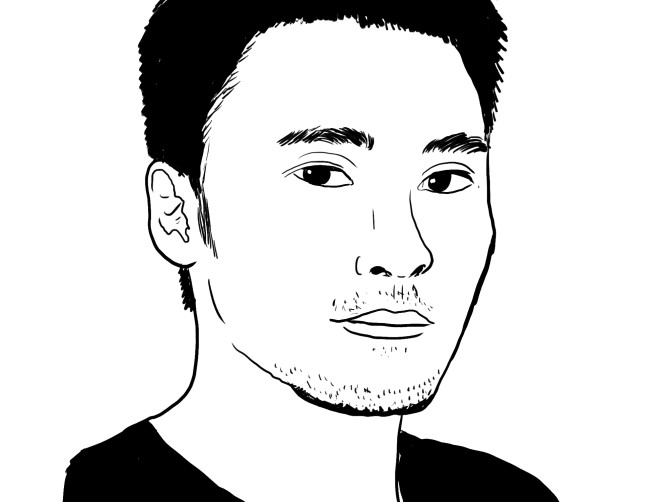Nicholas Wong is a poet and teacher and even a “fire-starter,” according to Time Out: Hong Kong. His poetry collection Crevasse, which Tarfia Faizullah described as “poetry that is unashamed to be relentless” and Ocean Vuong called “a book of seared seeking, a restlessness that opens,” is Kaya’s most recent release. In celebration of this book, Kaya asked him a few questions about language, poetry, and writing. Nicholas Wong has has been a finalist for the New Letters Poetry Award and the Wabash Prize for Poetry, and he received his MFA from City University of Hong Kong.
***
Kaya Press: Do you think of English as an alternative native language or a second language? How did that factor into your writing process?
Nicholas Wong: The idea of “alternative native” sounds fascinating to me. I guess it is true, and it has to be, when I am writing poems (in English), because a poet has to tune him/herself into the mechanics of the language s/he is writing in. This also makes the alternative nature compulsory. I teach in an education institute, where I am constantly reminded that English is our students’ (and my) second language. Seeing the term often drives me crazy because it reinforces a linguistic inferiority in me. I also find it dull and reductive to regard the language in this way, because it implies rules and a hierarchy.
A recent issue of Gulf Coast published a short essay, “Writing in Two Tongues,” by Wong Ping about her being bilingual, and she writes “[a] second language gives us new eyes and tools. A poem is not about completion, but process.” She also illustrates how the morphology of Chinese characters becomes a source of inspiration for her to derive poetic definitions of certain terms in the English language. I find it interesting, but think that this deconstructive approach to a less-familiar language has been done for many decades by poets/writers of hyphenated identities.
Currently I am exploring how the sounds of Cantonese can be homophonically translated into English (sometimes with the help of Siri) and how slangs in my mother language can work in my creative work. For example, “Nono” in Crevasse plays with the Cantonese homophones of a term that describes babies born in Hong Kong, but whose parents have no legal citizenship in the city. Much of the play is lost when the poem is written in English, but I do not care, because what matters is how the sound system of my mother tongue offers a playground for me.
Kaya: Who are your formative literary influences? What are your favorite books?
Wong: That is a good question to think about, because English has been taught in Hong Kong more as a language of accuracy than a language of creativity. In other words, learners (me included) would just follow whatever works grammatically. We do not study poetry or literature in class, so basically I write from a literary vacuum, which only starts to fill in during my college years.
I find reading poets talking about their influences is not useful. Their lists seem to suggest, if not reinforce, a kind of canon. And being influenced is a very personal thing. We cannot be influenced by the exact same poets and books. But I can share with you what poets or books make me realize that poetry can be done in a different way. They are: Kimiko Hahn’s zuihitsu, and Martha Ronk’s The Transfer of Qualities, which is a wonderful collection of philosophical prose poems about objects. I am also reading Mei-mei Berssenbrugge and teaching selected poems from the fabulous anthology Language for a New Century.
Kaya: This is your second published book. How do you decide which poems belong in a given collection?
Wong: Weak poems go and better ones stay. There is so much I want to undo with my first book. The press has now folded and the founder has taken the money and gone away. Choosing the right press that is run with visions is important to me, because I do not live in the States. Crevasse is my second first book.
Kaya: In your self-portrait poems, how did you choose to illustrate yourself as Eeyore, a bathroom cubicle, and salmon roe? How closely do you identify with the “I” in your poems?
Wong: There is a saying that poetry starts with a lie, and I find it useful in my writing process because ‘lying poems’ seem more organic. By lies, I do not mean the opposite of truths here, but rather a denial or a reluctance to admit. Are these poems personal? Yes, as all poems are.
I still remember where the Eeyore poem came from. There was so much resentment and self-pity in one of my previous relationships and in Carolyn Forche’s workshop, I was asked to write a self-portrait poem in one night. She did not specify the theme, so I made use of the feeling that was so ready inside me just to meet the assignment deadline.
In terms of the salmon roe portrait, I always find it interesting that in Hong Kong people usually order sushi from the menu, even when they could simply pick sushi from the revolving belt. God knows how long they have been circulating. I tend to look at them as ‘orphans’ and am amazed by how rarely they get picked up. Their existence is an irony to me. They are meant to be consumed by the palate, but end up being a mobile visual display.
Kaya: How might the image of a crevasse shape your understanding of your own identity?
Wong: Because of the special socio-historical context of Hong Kong, cultural studies scholars have always used terms, such as ‘in-between-ness’ and ‘in transit’, to describe the people, movies, writings and whatever art forms being produced here. The image of a crevasse very much echoes this line of thought. It is a breakage on a surface, while the surface is ruined, but not broken into pieces. It is a state between intactness and ruins. There may be, too, a possibility that I am (unconsciously) attracted by poems that illustrate entrapment. I am skeptical about poems that illuminate by using epiphanies. I like to see how the subject is entangled between forces and how the poet can elevate the poems of such by (not) providing the subject with an exit.
Kaya: Why is light is a recurring motif in the book? How–if at all–does light impact one’s sense of identity?
Wong: It’s a funny question because I didn’t notice it. When I was gathering the poems for an early version of Crevasse, I knew there was so much about the (male) body and desire. But then a friend pointed out that my poems were full of the imagery of disease. If the light jumps out at you as a motif, I am glad it happens, because the collection seems to offer more than my intent. Perhaps, my answer to a previous question is also valid here. There’s so much alienation in writing in a colonial yet global language and trying to get published away from home. Maybe I am also hungering for, in Dickinson’s words, “a certain slant of light” to shed on me and my words. I do not really talk poetry with my friends and barely read in public in the city, because there is not much space for this to happen. Even if there is such a space, it is not as nurturing as the one in States. What matters to me, as a growing poet, is that I constantly need to be illuminated.


Leave a Comment
We'd love to know what you think.